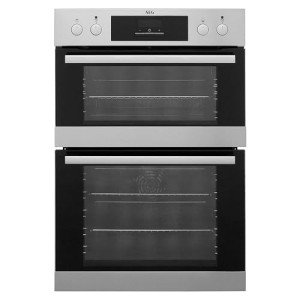The Rise of Built-In Ovens: A Seamless Approach to Modern Cooking
In contemporary kitchens, where style visual appeals blend effortlessly with functionality, one device sticks out as a real video game changer: the built-in oven. As property owners and chefs alike continue to seek ingenious solutions that improve their cooking experience, built-in ovens have ended up being progressively popular. This short article checks out the advantages, factors to consider, and trends surrounding built-in ovens, highlighting why they are a vital feature in modern cooking areas.
What is a Built-In Oven?
A built-in oven is a cooking area home appliance designed to be integrated into the cabinets of a kitchen area instead of standing alone. Unlike standard freestanding ovens, which can be moved and positioned anywhere, built-in ovens been available in different styles and sizes to fit specifically within designated areas. Readily available in single or double setups, these ovens offer a structured appearance that complements modern-day kitchen designs.
Benefits of Built-In Ovens
1. Space-Saving Design
Among the most enticing benefits of built-in ovens is their space-saving style. By integrating the oven into cabinetry, you can free up valuable counter and floor space. This is especially helpful in smaller sized kitchen areas, where taking full advantage of space is important. Built-in ovens can be set up at eye level, making them more accessible and minimizing the requirement to bend down.
2. Visual Appeal
Built-in ovens add to a sleek and cohesive kitchen style. Readily available in different finishes-- such as stainless steel, black, white, and custom-made kitchen cabinetry-- they can mix flawlessly into the total design. This aesthetic appeal boosts the kitchen area's visual harmony and raises the area, creating a modern-day and sophisticated environment.
3. Boosted Functionality
Numerous built-in ovens come geared up with sophisticated cooking technologies, such as convection cooking, steam ovens, and wise features. fitted ovens enable versatile cooking options, making it easier to attain professional-level outcomes in your home. Smart built-in ovens can even link to Wi-Fi, making it possible for users to control the oven from another location, receive notifications, and access a variety of cooking programs and recipes.
4. Enhanced Ventilation
Because built-in ovens can be integrated with kitchen area hoods and ventilation systems, they can assist preserve much better air quality and lower cooking odors. This is particularly significant for those who love to prepare with aromatic spices and components, as an effective ventilation system can keep the kitchen area comfy and welcoming.
5. Modification Options
Built-in ovens use a wide range of personalization alternatives to fit private cooking designs and requirements. From professional-grade home appliances with several cooking modes to compact designs for smaller sized cooking areas, homeowners can pick the oven that fits their specific requirements. Numerous makers likewise use adjustable front panels, permitting you to match the oven's look to your cabinetry for a really unified look.

Considerations When Choosing a Built-In Oven
While built-in ovens have numerous benefits, there are very important factors to consider to keep in mind before purchasing:
1. Cost
Built-in ovens normally feature a greater price tag than their freestanding equivalents due to their design and setup requirements. It's important to factor in both the expense of the oven and any additional costs connected to kitchen cabinetry modifications or installation.
2. Setup Requirements
Setting up a built-in oven often requires expert help, particularly if you need to customize existing cabinets. Ensure that you consider any expenses connected with setup, consisting of labor and possible cabinets modifications.
3. Size and Dimensions
Before purchasing a built-in oven, determine the designated space properly to ensure an appropriate fit. Built-in ovens can be found in various sizes and configurations, so picking one that aligns with your requirements and kitchen style is important.
4. Lifestyle and Usage
Consider your cooking habits and requires when selecting a built-in oven. If you frequently host large gatherings, a double oven might be more useful. On the other hand, if you have a compact cooking area, a single-wall oven may suffice.
Trends in Built-In Ovens
The kitchen area device market is continually evolving, and built-in ovens are not exempt from emerging trends. Some current trends include:
Smart Technology Integration: With the rise of wise home innovation, built-in ovens now frequently feature connectivity choices. This permits users to keep an eye on cooking progress and adjust settings via mobile apps.
Energy Efficiency: As sustainability becomes a priority, lots of makers are buying energy-efficient built-in ovens that lower energy usage while keeping performance.
Multi-functional Designs: Built-in ovens now use functions such as air frying, sluggish cooking, and steaming, offering flexibility that meets a wide range of cooking methods.
Conclusion
Built-in ovens unquestionably represent a best mix of design, function, and benefit in today's kitchen areas. As more homeowners choose this modern solution, the focus shifts to creating a cooking area that is as aesthetically pleasing as it is practical. Whether you are building a new home or remodeling your cooking area, considering a built-in oven could elevate your culinary experience and transform your cooking area into a stylish and practical haven. With a variety of alternatives offered and ongoing innovations in technology, built-in ovens remain a standout option for both amateur cooks and culinary lovers alike.
